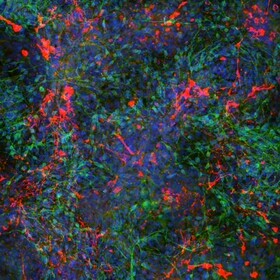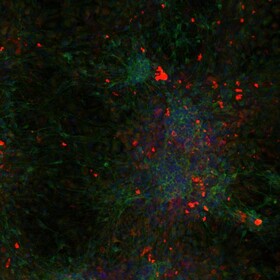
The Stern Laboratory for Precision Disease Modeling focuses on the modeling of neurological disorders using induced pluripotent stem cell (iPSC) technology. My lab reprograms patients’ cells (such as skin cells) into iPSCs and then differentiates them as neurons and other brain cells as monolayer cultures and brain organoids. In the derived human neurons, we perform a battery of assays to understand how these are different from the brain cells of healthy individuals. We use electrophysiology, molecular biology and computational modeling to delve into the mechanisms that contribute to the symptoms of the patients.
Dr. Shani Stern
[email protected]
Using induced pluripotent technology, we model neurological disorders such as bipolar disorder, autism spectrum disorder and Parkinson’s disease.
We found that in bipolar disorder, hippocampal neurons are hyperexcitable and physiologically unstable. This means that on average, they produce more action potentials. Furthermore, small changes in their environment easily shift their excitability state, which might explain why patients experience drastic mood swings.
In patients with Parkinson’s disease, we discovered reduced synaptic activity in dopaminergic neurons and early neuronal mortality. We found that the Parkinson’s neurons express many genes differentially compared to neurons derived from healthy controls. Moreover, these genes are involved in several pathways that are shared between sporadic patients and the different genetic mutations that are responsible for Parkinson’s disease.
In Autism spectrum disorder, we found that hippocampal synaptic deficits are common to many types of autism, while several ionic currents are different. These may be targets for novel treatment.



